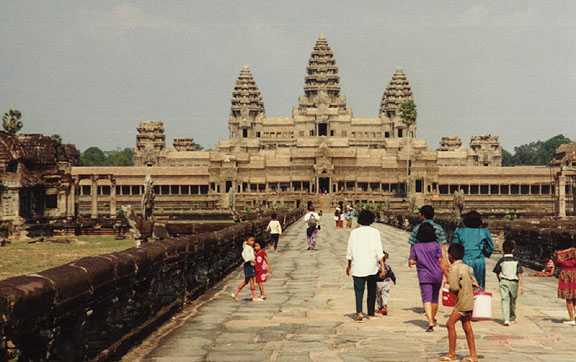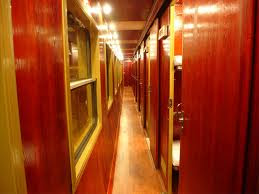Thanh Tan talks to Vu Thu Thuy, deputy chairwoman of Quang Ninh Provincial People's Committee, about the forthcoming carnival in Halong, which will be the highlight of Halong-Quang Ninh Tourism Week to be held April 24 to May 1
Why did you choose the slogan, "Quang Ninh Combines the Best" for this year's Halong-Quang Ninh Tourism Week?
This year's Carnival Halong 2012 aims to explore and promote more effectively the ethnic cultural identities of the area as well as the potential of cultural tourism.
Quang Ninh province is a unique and sacred destination. With its imposing natural landscapes, peaceful land and hospitable people, Quang Ninh eras a lot of features to offer tourists. This is also an ideal opportunity for investors to explore the province's potential and seek attractive investment opportunities. That's why we came up with the titled for this year's carnival: "Quang Ninh Combines the Best."
The Halong-Quang Ninh Tourism Week 2012 is a chance to converge and exchange experiences and knowledge across many fields and industries between various provinces and cities around the country and abroad. This event shows our openminded attitude to strengthen our integration with local and international partners.
Carnival Halong 2012 promises to be an exceptional event once again - what will be new this year? Carnival Halong is the highlight of Halong-Quang Ninh tourism week. This year Ha long Bay is being honoured as one of the New Seven Wonders of the world and we will also promote our myriad ethnic cultures and focus on traditional values.

The carnival is organised, arranged and performed by Quang Ninh native people — all traditional folk performances are performed by local residents, highlighting our unique and diversified value of local culture. This year the carnival will bewitch tourists with its simple but mysterious natural beauty rather than luxurious or splendid creations. This is an effective way to preserve the traditional culture of Quang Ninh while expressing vitality and strength.
Carnival Halong 2012 will feature a large number of international and national art and cultural performance troupes - how many people will be involved?
There are more than 3,800 amateur and professional artists performing at this year's carnival, including over 600 models, actors and actresses, as well as 3.200 amateur actors and local ethnic groups, local businesses. The street parade also includes flower carrying slogans, "Quang Ninh Combines the Best", "Halong - A Legendary Wonder", "Quang Ninh: Historical and Festival Tourism", "Quang Ninh - Spiritual Tourism", "Quang Ninh - Sea & Island Tourism" and much more. A grand stand that can seat over 10,000 spectators has been built along the carnival route.
The carnival will feature the participation of domestic and international provinces and cities such as Hanoi, Haiphong, five northern key economic and sea-coast provinces, members of the East Asia Interregional Tourism Forum (EATOF) from Lao and South Korea, and representatives from Guangxi, Guangdong. Hainan and Yunnan of China, plUs the six cities whose wonders have been voted as new natural wonders of the world. Every activity will showcase the beauty of culture and revived tourist services to help attract more local and international tourists.
With a vast number of tourists flocking to the carnival - estimated to be in the region of 50.000 - how will local authorities ensure safety and security?
We have established a public order and security subcommittee created from seven related provincial departments and 14 districts to build a master plan to ensure security and safety for all activities held across the province during the Halong- Quang Ninh Tourism week.
In addition to ,the Halong Carnival and the ceremony to receive the title, "Halong Bay — the New World Wonder", our subcommittee has out-lined detailed plans and deployed comprehensive security forces, including police, army troops and border police, both on land and offshore, We have prepared carefully for the event several months in advance to help prevent crime.
Besides we have also intensified inspections to maintain public order, prevent fires and public disturbances at the carnival and near the fire-works area as well as to ensure road and water safety in the event areas and their surroundings. We will all try our utmost to maintain safety and public order so visitors can enjoy this meaningful event.
Quang Ninh province is a unique and sacred destination. With its imposing natural landscapes, peaceful land and hospitable people, Quang Ninh eras a lot of features to offer tourists. This is also an ideal opportunity for investors to explore the province's potential and seek attractive investment opportunities. That's why we came up with the titled for this year's carnival: "Quang Ninh Combines the Best."
The Halong-Quang Ninh Tourism Week 2012 is a chance to converge and exchange experiences and knowledge across many fields and industries between various provinces and cities around the country and abroad. This event shows our openminded attitude to strengthen our integration with local and international partners.
Carnival Halong 2012 promises to be an exceptional event once again - what will be new this year? Carnival Halong is the highlight of Halong-Quang Ninh tourism week. This year Ha long Bay is being honoured as one of the New Seven Wonders of the world and we will also promote our myriad ethnic cultures and focus on traditional values.

The carnival is organised, arranged and performed by Quang Ninh native people — all traditional folk performances are performed by local residents, highlighting our unique and diversified value of local culture. This year the carnival will bewitch tourists with its simple but mysterious natural beauty rather than luxurious or splendid creations. This is an effective way to preserve the traditional culture of Quang Ninh while expressing vitality and strength.
Carnival Halong 2012 will feature a large number of international and national art and cultural performance troupes - how many people will be involved?
There are more than 3,800 amateur and professional artists performing at this year's carnival, including over 600 models, actors and actresses, as well as 3.200 amateur actors and local ethnic groups, local businesses. The street parade also includes flower carrying slogans, "Quang Ninh Combines the Best", "Halong - A Legendary Wonder", "Quang Ninh: Historical and Festival Tourism", "Quang Ninh - Spiritual Tourism", "Quang Ninh - Sea & Island Tourism" and much more. A grand stand that can seat over 10,000 spectators has been built along the carnival route.
The carnival will feature the participation of domestic and international provinces and cities such as Hanoi, Haiphong, five northern key economic and sea-coast provinces, members of the East Asia Interregional Tourism Forum (EATOF) from Lao and South Korea, and representatives from Guangxi, Guangdong. Hainan and Yunnan of China, plUs the six cities whose wonders have been voted as new natural wonders of the world. Every activity will showcase the beauty of culture and revived tourist services to help attract more local and international tourists.
With a vast number of tourists flocking to the carnival - estimated to be in the region of 50.000 - how will local authorities ensure safety and security?
We have established a public order and security subcommittee created from seven related provincial departments and 14 districts to build a master plan to ensure security and safety for all activities held across the province during the Halong- Quang Ninh Tourism week.
In addition to ,the Halong Carnival and the ceremony to receive the title, "Halong Bay — the New World Wonder", our subcommittee has out-lined detailed plans and deployed comprehensive security forces, including police, army troops and border police, both on land and offshore, We have prepared carefully for the event several months in advance to help prevent crime.
Besides we have also intensified inspections to maintain public order, prevent fires and public disturbances at the carnival and near the fire-works area as well as to ensure road and water safety in the event areas and their surroundings. We will all try our utmost to maintain safety and public order so visitors can enjoy this meaningful event.
Source: timeout
Related information










